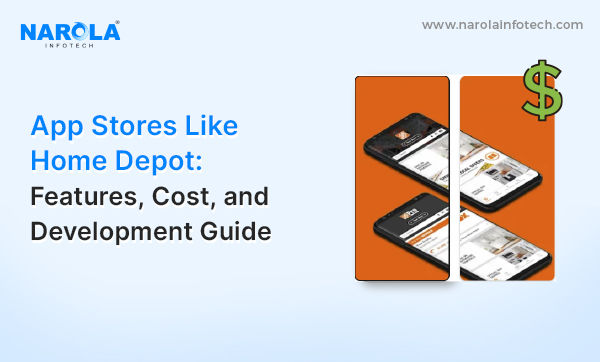Top API Integration Tools for Scaling Business
- NarolaInfotech

- Apr 24, 2024
- 3 min read
The right API integration platform and tool can be an essential part of scaling your business. About 61% of integration professionals and IT executives believe API integration is necessary for business success.
Let's look at what API integration tools are, explore some common use cases, and review the best API integration tools currently available.
What are API Integration Tools?
API integration tools are software solutions that are meant to connect various systems, applications, or databases. It enables these systems to communicate with each other and share data in a completely smooth manner.
API integration tools typically offer features such as connectivity, data transformation, workflow automation, orchestration and monitoring and management.
API Integration Tools Use Cases
API integration tools are like software middlemen that connect different applications and systems, allowing them to share data and functionality. This can be incredibly beneficial for businesses, streamlining workflows and boosting efficiency. Here are some common use cases for API integration tools:

Payment Gateways
E-commerce and Inventory Management
CRM and Email Marketing
Social Media Logins
Omnichannel Retail
Internet of Things (IoT) Management
Top API Integration Tools
1. Zapier
Zapier is a cloud-based, user-friendly platform that is well-known for its simple drag-and-drop interface. Thousands of web applications (apps) can be connected more easily via pre-built connectors known as "Zaps."
Features:
Perfect for non-technical users and beginners.
Free plan for basic automation with a restricted number of Zaps.
More connections, multi-step workflows, and sophisticated capabilities are available with paid programs.
Extensive collection of ready-made Zaps for different uses.
Simple setting and setup.
2. Microsoft Azure API Management
For managing APIs inside the Microsoft Azure cloud platform, Microsoft Azure is a well-liked API integration tool. It provides strong analytics, security, and developer portal building features.
Features:
Robust security features, such as access control and token management, are tailored to meet the needs of enterprises.
Gives access to API metrics for consumption and performance tracking.
Permits the development of developer portals for simple documentation and API access.
Easily connects with more Azure services to provide a cohesive cloud experience.
3. Dreamfactory
With the aid of Dreamfactory, users can integrate apps and create APIs without needing to know a lot of code. It makes data source connections easier and provides a graphical interface for building APIs.
Features:
It is compatible with multiple platforms.
Create APIs with a visual builder instead than writing complicated code.
Supports a wide range of data sources, including social media networks, cloud storage, and databases.
Software Development Kits (SDKs) for web and mobile platforms are available enabling simple client-side integration.
4. Dell Boomi
Boomi is an enterprise-level platform that can handle complicated API administration and data integration requirements. It features strong security procedures and is excellent at managing large-volume data transfers.
Features:
Made for big businesses with complex data environments.
Focuses on master data management and large-scale data transfers.
Offers strong data encryption and access control security features.
Ideal for cases involving complicated data integration from a variety of data sources.
5. MuleSoft Anypoint Platform
With a full toolkit for creating, constructing, and maintaining APIs, it is a top platform for API-driven connection. MuleSoft facilitates deployments in the cloud as well as on-premises.
Features:
Permits the deployment of APIs on-premise or in the cloud and offers a hybrid integration method.
Provides API lifecycle, security, and versioning management capabilities.
Incorporates API analytics to track efficiency and spot bottlenecks.
Accommodates a large number of connectors for different data sources and applications.
6. Jitterbit
Jitterbit is a data-driven API integration platform that specializes in cloud-based solutions and is particularly good at real-time data synchronization, visual data mapping, and pre-built connectors.
Features:
Provides ready-made connections for well-known cloud apps, expediting the integration process.
Offers solutions for visual data mapping that make data translation and manipulation simple.
Permits apps to synchronize data in real time, guaranteeing data consistency.
Emphasizes cloud-based deployments for convenient accessibility and scalability.
7. Apigee API Management Platform
Google Cloud offers a complete API management and governance solution called Apigee. It offers monetization choices, analytics, developer portals, and strong security measures.
Features:
Provides developer portals for quick access to documentation and API discovery.
offers robust security features such as threat prevention, throttling, and API access control.
Incorporates API analytics to track usage patterns and performance.
Makes API monetization possible by providing features like charging and metering.
Provides a unified experience by seamlessly integrating with other Google Cloud services.
API integration tools streamline business processes and boost efficiency by easily connecting applications. These tools eliminate repetitive tasks, improve data accuracy, and speed up workflows, increasing productivity and saving money. API integration also improves application communication, helping firms improve customer service. These tools provide innovation and scalability, helping organizations adapt to changing market conditions.
Source: API Integration Tools




Comments